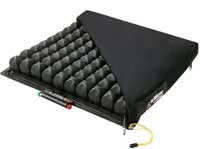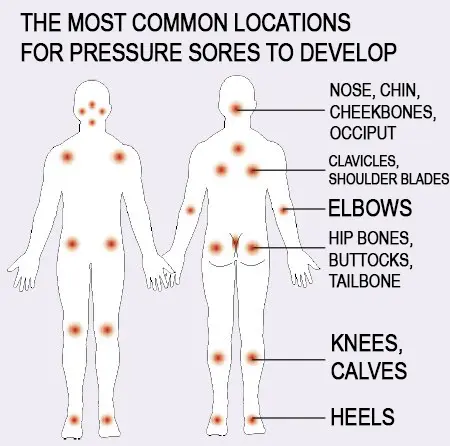Pressure Ulcers - My Experiences
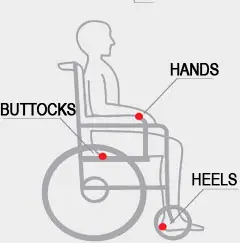
The topic of pressure ulcers will confront anyone who has lost sensation below a spinal cord injury. Unfortunately, as long as one does not notice alarming symptoms on the skin, either themselves or with the help of loved ones, they live under the false impression that it doesn't concern them and that they will never develop a pressure ulcer. Despite having decent knowledge about the risks for individuals with quadriplegia, I also took a rather lax approach to pressure ulcer prevention. The consequence of this was my first pressure ulcer on the coccyx, also known as the tailbone, which developed about a year after my cervical spine fracture.
The cause of the pressure ulcer was sitting for too long, which led to continuous pressure and a lack of proper blood flow to the area around the coccyx. The first symptoms I experienced were an enlarging wound and sweating on the right side of my body (the right side of my forehead and right shoulder). Using a dozen different ointments meant to help heal the wound did little good, and the size and depth of the ulcer continued to increase. Just 15 minutes in a sitting position was enough to cause sweating as if I had just come out of a bath. When an unpleasant smell began to spread in the room due to the onset of the necrotic process, I realized that this was not a joke and that drastic measures needed to be taken. I decided to completely stop sitting to avoid putting pressure on the wound and allow the tissue in that area to regenerate. A friend from Germany brought me an ointment for pressure ulcers, and thanks to my parents, we applied it twice a day. Consistency and discipline in avoiding pressure on the coccyx paid off, and after three months, the wound healed completely. After that time, I was finally able to return to a sitting position, remembering not to exceed three hours.
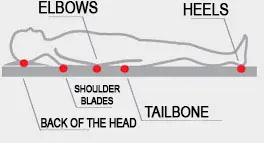
My second pressure ulcer also developed due to sitting for too long. Ten years had passed since I healed the first ulcer, and unfortunately, I increasingly allowed myself to put hours of strain on the same spot. I forgot about prevention and believed that the topic of pressure ulcers was now a thing of the past for me. The first symptom was a two-centimeter skin tear on the coccyx and slight sweating. The application of medical products made the wound shrink to three millimeters. Having such good news about the healing of tissue on my coccyx, I opted for longer periods in a sitting position, unaware that the new ulcer differed from the previous one and was more insidious. The healing of the wound was only superficial, and the necrotic tissue was increasing in size beneath the skin layer, releasing an unpleasant-smelling fluid through a small opening. Several months of therapy with various medical products yielded no results, and the discomfort from sweating and the unpleasant discharge increased, so I decided to visit the General Surgery Clinic at the Specialist Hospital in Legnica.
The surgeon closely examined my problem and recommended flushing and cleaning the wound under the skin with saline through the opening. After more than a month, I returned for a follow-up, but my doctor was not on duty, and another physician saw me. After a cursory review of my issue, the doctor declared it a trifle and told me not to come back with such problems. I was speechless. I have a pressure ulcer that makes it impossible for me to live in a sitting position, and the doctor says it's a trifle! I returned home disheartened, but I decided not to give up. I resolved to return to the hospital when my doctor, who did not downplay my problem, was in the clinic. This is what happened, and the subsequent visits over the following months went normally. My doctor prescribed various medications, but unfortunately, the problem did not diminish. After three years of treatment, there were no effects, and my brief, hour-long sitting sessions ended with a high fever. I had had enough, and during my visit with my doctor, I asked if it was possible to remove that damn pressure ulcer. The doctor said that it was in such a place that for walking patients, it takes months to heal, and in my case, it might never heal. I was discouraged but refused to give in.
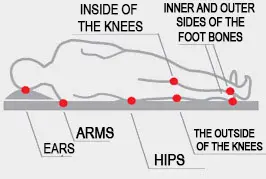
While browsing the Internet and reading about pressure ulcers, I repeatedly came across the hospital in Nowa Sól in the Lubusz Voivodeship. There is a Department of Plastic Surgery and Burns that specializes in treating pressure ulcers. I arranged for a referral to the clinic and, with the help of friends, I got an appointment with Dr. Stolarski. The description of the symptoms of the pressure ulcer, and especially the examination by the doctor, unequivocally qualified me for surgery. I was informed that a necessary condition for the success of the treatment was three weeks of lying on my stomach after the operation, without even a moment's break. Of course, I agreed to everything and was happy that I was in good hands. The operation lasted an hour and involved the removal of necrotic tissue that extended from the coccyx to the abdominal wall around the peritoneum. Ten days after the surgery, something alarming started to ooze from the surgical wound. There was a risk of reoperation and lying on my stomach again, but thanks to Dr. Stolarski's knowledge and the dedication of the nursing staff, the undesirable symptoms were alleviated. After two months of staying at the Hospital in Nowa Sól, I returned home with a small wound and slight discharge. The doctor admitted that due to the extent of the pressure ulcer and its difficult-to-access location, he might have missed a small fragment during the surgery, which was the reason for the delayed healing of the wound. However, the doctor was optimistic and believed that the wound would eventually close on its own, while reminding me not to overdo the number of hours spent sitting and to purchase a good pressure-relief cushion. About a year after the surgery, the discharge disappeared, leaving only a surgical scar.
As my experiences show, pressure ulcers are a significant problem for individuals who lack sensation below the site of injury. It is very easy to develop skin changes, but difficult to heal them. The treatment time for my second pressure ulcer lasted five years and cost a considerable amount of money, significantly limiting my active functioning. It is also worth mentioning that the threat to my life was very real. I therefore recommend monitoring the most vulnerable parts of the body, frequently changing positions, and purchasing a good pressure-relief cushion. By following these basic principles, there is a good chance that the issue of pressure ulcers will never affect you.

 PL
PL
 DE
DE
